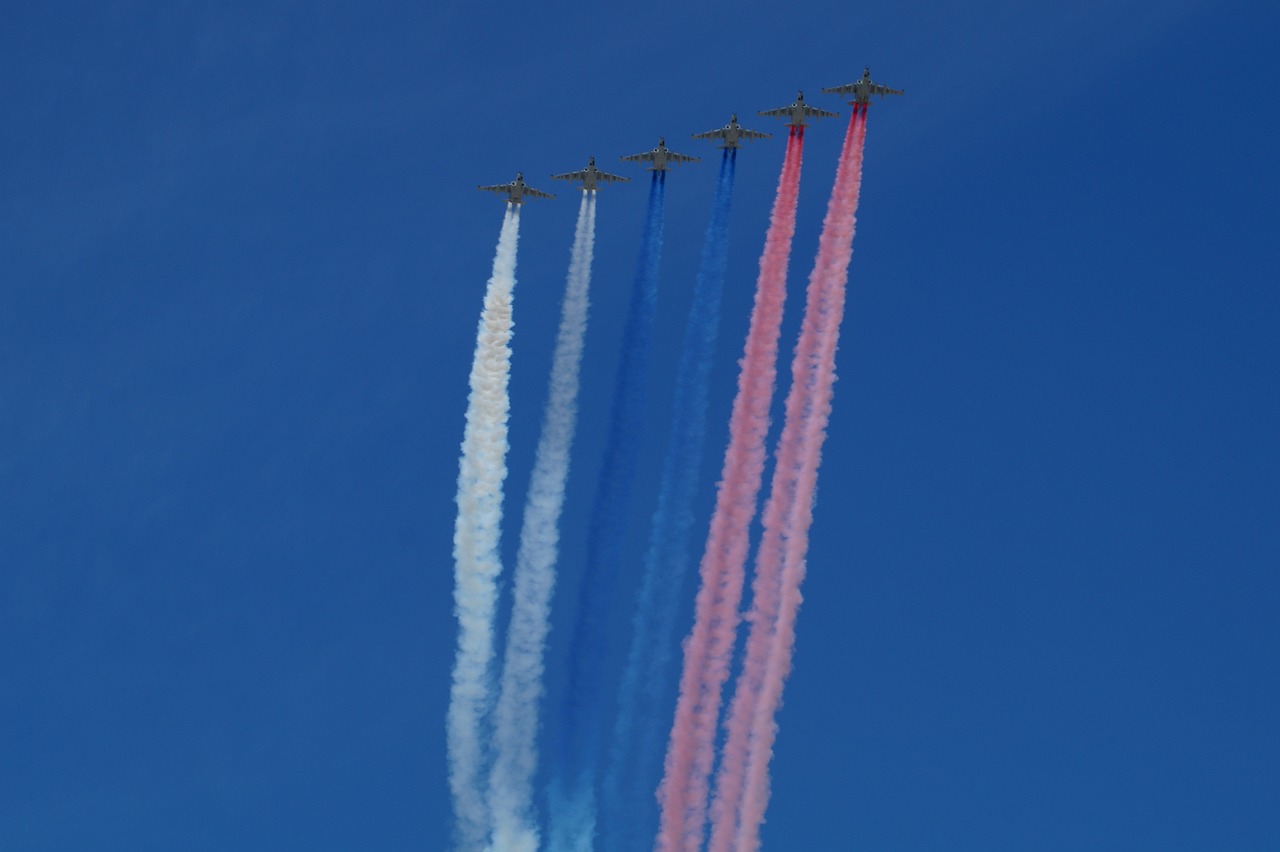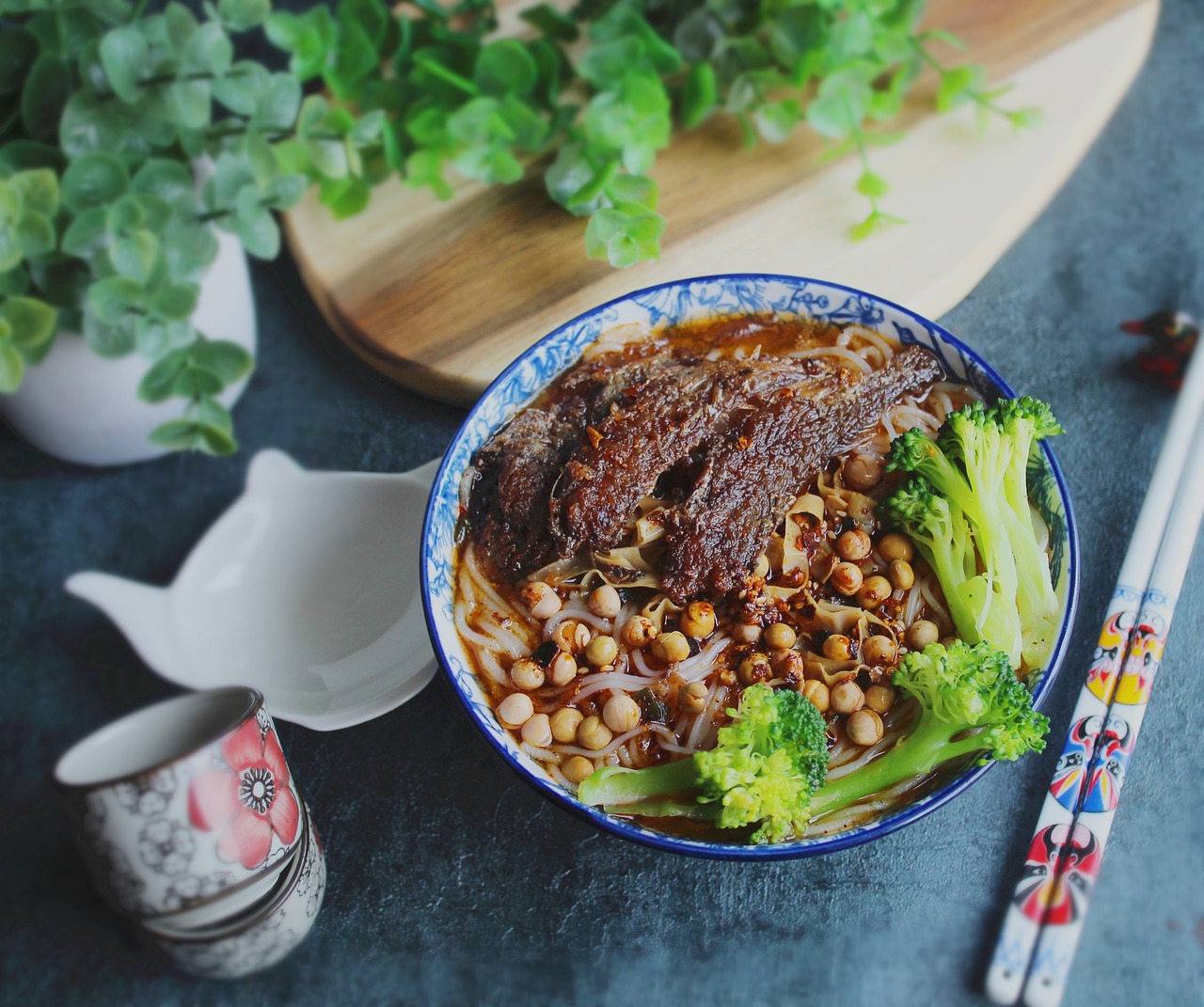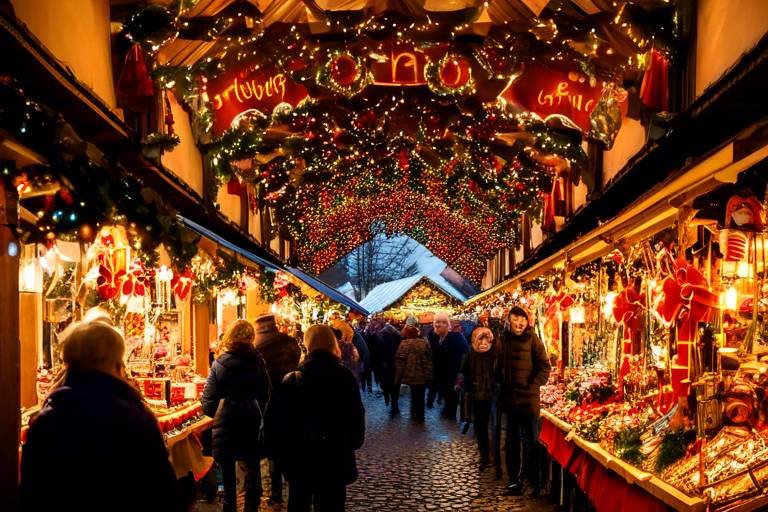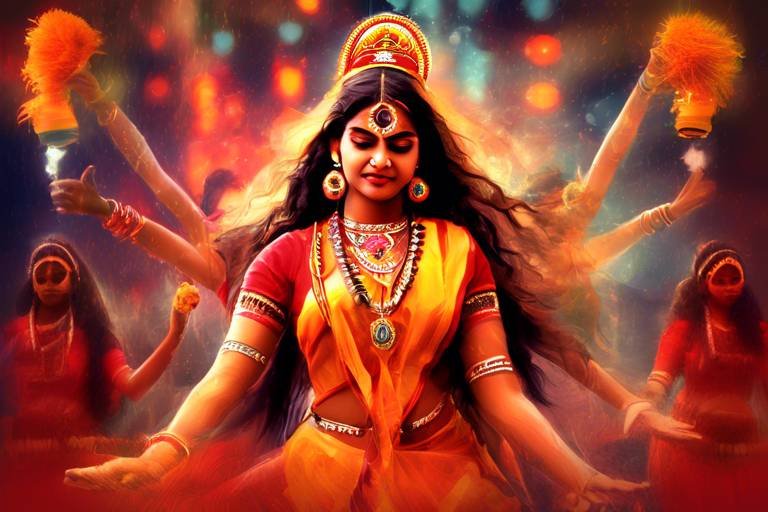Russia's Maslenitsa - A Week of Pancakes and Traditions
Origin and History
Discover the roots of Maslenitsa, a traditional Russian festival celebrating the end of winter and the beginning of spring with a week-long feast of pancakes and festivities. Maslenitsa, also known as Butter Week or Pancake Week, has its origins in pagan rituals that welcomed the return of the sun and the fertility of the land. Over time, it evolved into a Christian holiday preceding the Lenten period, marked by indulgence in rich foods before the fasting season.
Symbolism of Pancakes
Explore the significance of pancakes in Maslenitsa, representing the sun and the coming of spring. The round shape and golden color of pancakes symbolize the sun, while the act of flipping them symbolizes the changing of seasons. It is believed that eating pancakes during Maslenitsa brings good luck and prosperity for the year ahead. Families gather to prepare and enjoy these delicious treats together, fostering a sense of unity and joy.
Traditional Activities
Learn about the various customs and activities that take place during Maslenitsa. From sledding down snow-covered hills to participating in traditional folk dances, the week-long celebration is filled with vibrant energy and merriment. One of the most iconic rituals is the burning of a Maslenitsa effigy, symbolizing the end of winter and the triumph of spring. This fiery spectacle is accompanied by singing and dancing, creating a festive atmosphere.
Regional Variations
Discover how different regions in Russia celebrate Maslenitsa with unique traditions, foods, and activities. Each area puts its own spin on the festival, incorporating local customs and specialties. For example, in Moscow, elaborate ice sculptures are displayed, while in Siberia, horse-drawn sleigh rides are a common sight. These regional variations highlight the diverse cultural heritage of Russia and showcase the creativity of its people.
Religious and Folklore Connections
Explore the religious and folklore connections of Maslenitsa, blending pagan and Christian traditions. The festival's roots in Slavic mythology are intertwined with Christian beliefs, creating a rich tapestry of cultural practices. Maslenitsa is a time of spiritual renewal and purification, as well as a celebration of nature's awakening. Folk tales and legends are shared during this period, adding depth and meaning to the festivities.
Modern Celebrations
Find out how Maslenitsa is celebrated in contemporary Russia, with public events, concerts, and fairs. The festival has evolved with the times, incorporating modern elements while preserving its traditional essence. People of all ages come together to enjoy live music, dance performances, and art exhibitions, creating a sense of community and camaraderie. Maslenitsa has become a popular event that attracts both locals and tourists alike.
Global Influence
Understand the global impact of Maslenitsa, as Russian communities around the world come together to observe this ancient festival. From New York to Sydney, Russian expatriates and enthusiasts organize Maslenitsa celebrations to share their cultural heritage with others. The festival serves as a bridge between different cultures, fostering cross-cultural exchange and mutual understanding.
Recipes and Culinary Delights
Delve into the world of Russian cuisine during Maslenitsa, with traditional recipes for blini, caviar, and other delicious dishes enjoyed during this festive week. Blini, thin pancakes served with an array of toppings such as sour cream, caviar, and jam, are a staple of the Maslenitsa menu. These delectable treats are enjoyed in abundance, symbolizing abundance and prosperity for the year ahead.
Preservation of Tradition
Explore efforts to preserve and promote the traditions of Maslenitsa in modern times. Cultural organizations and local communities work tirelessly to ensure that this ancient festival continues to thrive and evolve. Through educational programs, workshops, and public events, the heritage of Maslenitsa is passed down to future generations, keeping the spirit of the festival alive.

Symbolism of Pancakes
In the vibrant celebration of Maslenitsa, the humble pancake takes on a profound symbolic meaning, embodying the essence of the festival's traditions. These round, golden delights symbolize the sun, with their warm, comforting presence signifying the end of the cold winter days and the arrival of the rejuvenating spring season. As families gather around the table to enjoy stacks of pancakes dripping with butter and honey, they are not just indulging in a culinary delight but partaking in a ritual that welcomes the light and warmth of the sun back into their lives.
The preparation and consumption of pancakes during Maslenitsa are steeped in customs and rituals that date back centuries. The act of flipping a pancake in the air symbolizes the sun rising high in the sky, bringing light and life to the world. It is believed that the more successful flips one can execute without dropping the pancake, the more prosperous the year ahead will be. This playful tradition not only adds an element of fun to the festivities but also reinforces the belief in a bountiful future.
Furthermore, the round shape of pancakes represents the cycle of life, with each bite taken symbolizing the passage of time and the eternal renewal of nature. By savoring these circular treats, participants in Maslenitsa acknowledge the cyclical nature of existence, embracing the inevitable changes and transformations that come with each season.

Traditional Activities
During Maslenitsa, traditional activities play a crucial role in bringing communities together and celebrating the arrival of spring. One of the most popular customs is sledding, where people of all ages race down snowy hills on sledges, adding an element of fun and excitement to the festivities. This activity symbolizes the joy and thrill of the season's change, as winter gives way to the warmer days of spring.
Dancing is another integral part of Maslenitsa, with lively folk dances and music filling the air as people gather in town squares and village centers to showcase their traditional moves. The rhythmic beats and colorful costumes create a vibrant atmosphere, inviting everyone to join in and celebrate the spirit of the festival through dance.
One of the most symbolic rituals of Maslenitsa is the burning of a straw effigy, known as "Lady Maslenitsa," which represents the end of winter and the welcoming of spring. This ritual involves setting the effigy ablaze while singing songs and bidding farewell to the cold season, symbolizing the renewal of life and the cycle of nature.
Throughout the week-long celebration, families and friends come together to enjoy traditional games and competitions, such as egg balancing contests and tug-of-war battles, adding a competitive yet festive spirit to the gatherings. These activities strengthen bonds within the community and create lasting memories for all participants.

Regional Variations
When it comes to celebrating Maslenitsa, different regions in Russia put their unique spin on this traditional festival, showcasing the diverse cultural tapestry of the country. From the bustling streets of Moscow to the serene villages in Siberia, each region brings its own traditions, foods, and activities to the table, making Maslenitsa a truly vibrant and multifaceted celebration.
In Moscow, the capital city, Maslenitsa is a grand affair with elaborate parades, concerts, and fairs taking place throughout the week. The streets are alive with music, dance, and laughter as locals and tourists alike join in the festivities. Traditional foods like blini, caviar, and honey cakes are enjoyed by all, adding a delicious touch to the celebrations.
On the other hand, in Siberia, where winter holds its grip a little longer, Maslenitsa takes on a more intimate and cozy vibe. Families gather around bonfires, sharing stories and songs as they feast on hearty pancakes and warm drinks. The snowy landscape provides a picturesque backdrop to the festivities, creating a magical atmosphere that is unique to this region.
Further south, in the Volga region, Maslenitsa is celebrated with a focus on outdoor activities like sledding, ice skating, and horse-drawn sleigh rides. The frozen rivers and snow-covered fields become playgrounds for both young and old, adding an adventurous spirit to the traditional festivities.
Each region's interpretation of Maslenitsa reflects not only the local climate and landscape but also the cultural heritage and traditions that have been passed down through generations. Whether it's the bustling city streets of Moscow, the serene villages of Siberia, or the adventurous spirit of the Volga region, Maslenitsa brings people together in a celebration of spring, renewal, and community.

Religious and Folklore Connections
Maslenitsa, also known as Butter Week or Pancake Week, has deep-rooted connections to both religious traditions and folklore in Russia. This vibrant festival combines elements of pagan rituals with Christian beliefs, creating a unique blend of cultural practices that have been passed down through generations.
One of the most prominent religious connections of Maslenitsa is its ties to the Orthodox Christian calendar. The festival marks the beginning of Lent, a period of fasting and reflection leading up to Easter. As a result, Maslenitsa serves as a time of feasting and indulgence before the solemnity of the Lenten season begins.
On the folklore side, Maslenitsa is steeped in ancient Slavic traditions that celebrate the end of winter and the arrival of spring. The burning of a straw effigy, known as "Lady Maslenitsa," symbolizes the expulsion of winter and the welcoming of the warmer months ahead. This ritual is a vivid representation of the cycle of seasons and the eternal struggle between light and darkness.
Furthermore, the round shape of pancakes holds symbolic significance during Maslenitsa. Pancakes, or blini, are associated with the sun and are believed to bring warmth and light into the household. By consuming pancakes during the festival, people pay homage to the sun and express their hopes for a bountiful harvest in the coming year.
Throughout the week-long celebration of Maslenitsa, various customs and superstitions are observed to ensure good luck and prosperity. From the act of sledding down snowy hills to the lively folk dances performed in traditional costumes, each activity is imbued with spiritual meaning and cultural significance.

Modern Celebrations
Modern Celebrations of Maslenitsa in Russia have evolved to blend traditional customs with contemporary festivities, creating a vibrant and lively atmosphere that attracts people of all ages. The week-long celebration now features public events such as concerts, street performances, and fairs where locals and tourists alike can immerse themselves in the festive spirit. These events showcase a mix of traditional music, dance, and food, providing a unique experience that captures the essence of Russian culture.

Global Influence
When it comes to the global influence of Maslenitsa, it's fascinating to see how this traditional Russian festival has transcended borders and captivated people around the world. Russian communities scattered across the globe come together to observe this ancient celebration, sharing their cultural heritage with others and fostering a sense of unity and belonging.
From bustling cities to remote villages, Maslenitsa serves as a reminder of the universal themes of renewal, community, and joy that resonate with people from diverse backgrounds. The spirit of the festival, with its focus on bidding farewell to winter and welcoming the warmth of spring, strikes a chord with individuals everywhere, regardless of their cultural or religious affiliations.
Through vibrant events, lively concerts, and colorful fairs, the essence of Maslenitsa spreads far and wide, attracting not only locals but also curious travelers eager to experience the rich tapestry of Russian traditions. The festive atmosphere, filled with music, dance, and, of course, an abundance of delicious pancakes, creates a sense of camaraderie and celebration that transcends language barriers and geographical boundaries.

Recipes and Culinary Delights
Delve into the world of Russian cuisine during Maslenitsa, a week-long festival filled with culinary delights and traditional recipes that have been passed down through generations. One of the most iconic dishes enjoyed during this festive period is blini, thin pancakes that symbolize the sun and the coming of spring. These delicate pancakes are typically served with an array of toppings, such as sour cream, caviar, smoked salmon, or jam, creating a perfect blend of sweet and savory flavors.
In addition to blini, Maslenitsa is also a time to indulge in other Russian delicacies, such as pirozhki, small baked or fried buns filled with savory ingredients like meat, potatoes, or cabbage. These handheld treats are perfect for snacking during the festivities, offering a hearty and satisfying bite that warms the soul on cold winter days.
For those with a sweet tooth, Maslenitsa brings an array of desserts to the table, including traditional honey cakes, known as medovik, and sweet cheese blintzes, called syrniki. These decadent treats are enjoyed by both young and old, adding a touch of sweetness to the celebration and bringing joy to all who partake in the feasting.
To complement the rich and flavorful dishes of Maslenitsa, traditional drinks like sbiten, a warm spiced honey drink, and mors, a refreshing berry beverage, are often served. These beverages not only quench thirst but also add a festive touch to the culinary experience, enhancing the overall enjoyment of the week-long celebration.

Preservation of Tradition
Preserving the traditions of Maslenitsa is a vital endeavor to ensure that the rich cultural heritage of this festival continues to thrive for generations to come. Efforts to safeguard these customs involve a combination of educational initiatives, community engagement, and the promotion of traditional practices. By organizing workshops, exhibitions, and cultural events, enthusiasts aim to pass down the rituals and significance of Maslenitsa to younger audiences. Additionally, collaborations with schools and local authorities help integrate these traditions into the fabric of society, keeping the spirit of the festival alive.
Frequently Asked Questions
- What is the significance of Maslenitsa in Russian culture?
Maslenitsa holds great cultural significance in Russia as it marks the end of winter and the beginning of spring. It is a time for people to come together, enjoy festive activities, and indulge in delicious traditional foods like pancakes.
- What are some traditional activities associated with Maslenitsa?
Traditional activities during Maslenitsa include sledding, dancing, and the burning of a symbolic effigy to bid farewell to winter. These customs symbolize the transition from the cold winter months to the warmer days of spring.
- How is Maslenitsa celebrated in modern Russia?
In modern Russia, Maslenitsa is celebrated with public events, concerts, fairs, and various cultural activities. It has become a time for both locals and tourists to join in the festivities and experience the rich cultural heritage of the country.
- What is the global influence of Maslenitsa?
Maslenitsa has a global impact as Russian communities around the world come together to observe this ancient festival. It serves as a way for these communities to share their cultural traditions and heritage with others, fostering connections and unity.
- How can I experience the culinary delights of Maslenitsa?
To experience the culinary delights of Maslenitsa, you can explore traditional Russian recipes for blini, caviar, and other delicious dishes enjoyed during this festive week. These recipes offer a taste of the rich culinary heritage of Russia.
- What efforts are being made to preserve the traditions of Maslenitsa?
Efforts are being made to preserve and promote the traditions of Maslenitsa in modern times to ensure that this cultural heritage continues to thrive for future generations. Various initiatives aim to safeguard the customs and rituals associated with the festival.



















